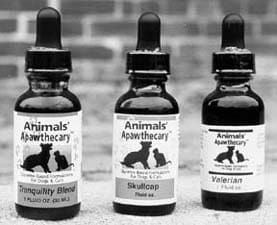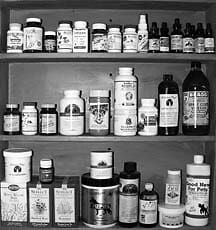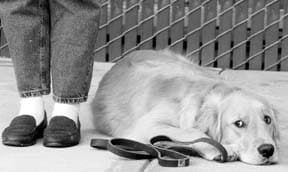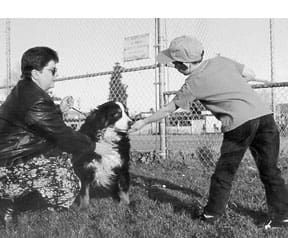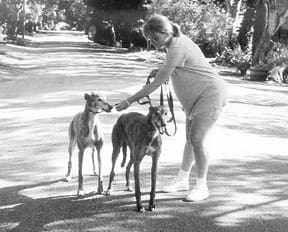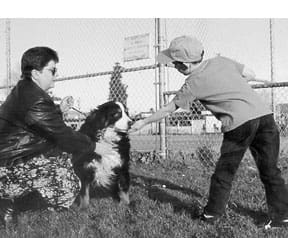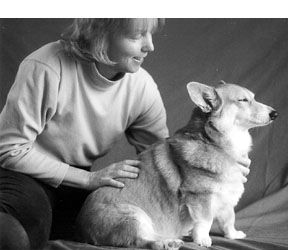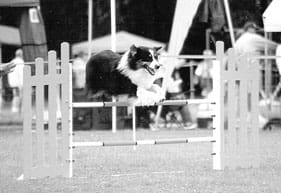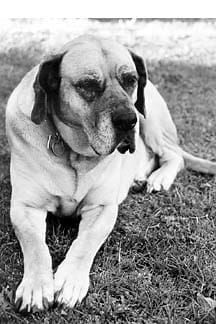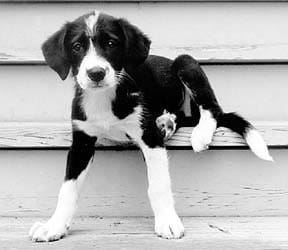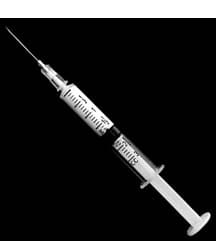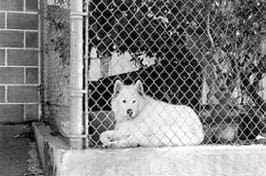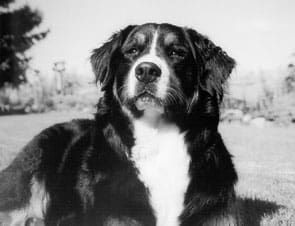Alternatives for Epileptics
I have read that epilepsy can be caused by (or at least aggravated by) certain nutrient deficiencies. Are there any supplements you can recommend for dogs for prevention of epileptic seizures? I’m looking for alternatives to Phenobarbital.
-Name withheld by request
San Mateo, California
My five-year-old Cocker Spaniel, Casey, has been getting convulsions/ seizures since she was three years and four months old. She has been on Phenobarbital (30 milligrams twice a day) for almost two years. I understand that after a certain time Phenobarbital can damage organs in the body. Is there an alternative to Phenobarbital that is safer and has fewer or no side effects that will control her seizures?
-Sandra L. Neuheimer
Fleetwood, PA
A Veterinarian’s Opinion
We posed these questions to two experts: a holistic veterinarian and an herbalist. The first view on the subject of epilepsy comes from Dr. Charles Loops, a well-known holistic veterinarian in Pittsboro, North Carolina. Dr. Loops practices homeopathy exclusively, and consults with many of his clients over the telephone. He has a special interest in cancer treatment.
Epilepsy is a common problem for every veterinary practitioner. There are so many variations in symptoms, frequency of occurrence, intensity of seizures and age of onset, that any combination can be found between the numerous animals afflicted with this condition.
This is an old disease that seems to have always affected a small percentage of animals, however, vaccinations are a stress factor that can bring out this problem. Many animals begin seizure syndromes following a vaccination. Some can be cured of this imbalance with homeopathic treatment and others can only be controlled.
Occasionally a diet change or addition of supplements will correct a seizure problem but not often. B-vitamins are very important in neurological functional maintenance and should be supplemented when a seizure problem exists. I feel it is best to use a B-complex supplement, one containing all the known Bs, rather than choose certain ones. This avoids imbalances which might occur if individual ones such as choline are given in high doses.
Most epileptic dogs can be treated homeopathically without using Phenobarbital or other seizure medications. The more resistant cases will benefit from homeopathic and diet improvement as an adjunct to chemical therapy and generally require lower medicinal doses. As with most conditions, utilizing holistic treatments before starting on chemical medications enhances the odds that a cure will be possible. The use of suppressive treatments can take the curable case to the incurable level.
An Herbalist’s View
The next answer is from Gregory L. Tilford, co-owner and formulating herbalist of Animal’s Apawthecary. He is also the founding president of the Natural Pet Products Association, and the author of two books on wild medicinal plants: The EcoHerbalist’s Fieldbook (Mountain Weed Publishing, 1993) and Edible & Medicinal Plants of the West (Mountain Weed Publishing, 1997). Greg and his wife, Mary Wulff-Tilford, a professional member of the American Herbalist’s Guild, are completing a comprehensive guide book on herbs for animals.
There are several herbs that can be used to reduce the severity and frequency of epileptic fits. However, like Phenobarbital, herbs will only treat the symptoms of epilepsy (seizures); they won’t stop the disease.
Whichever approach you take, I’d also suggest taking a critical look at the dogs diet; nutrition is so important. I recommend that people improve the dogs diet before they use herbs or medications. Make sure the animal is getting the essential fatty acids, especially if he has any kind of nervous system disorder, because the Omega 3s and 6s are critical to proper nerve function. Also, you’ve got to have the amino acids taurine for cats and carnitine for dogs in order for the nervous system to work appropriately. Without those in place, herbs wont have any foundation from which to work. It’s like send fire engine to a fire without water; they have nothing to work with.
There are several herbal remedies commonly recommended by herbalists for epilepsy, and some holistic veterinarians are using them as alternatives to Phenobarbital.
One of the ones I recommend contains some amount of choline, the nutrient that the first writer alluded to. However, the herbs are not generally used for their nutritive content, but rather, for their abilities as nervines. This is a term used for herbs which moderates or adjusts nervous function. They are not necessarily sedatives, but they can have a sedative effect.
The first herb I’d suggest using is skullcap, or Scutellaria. Skullcap is a nervine that is especially helpful for any kind of nervous jitteryness. It’s indicated for dogs with the kind of nervous anxiety associated with having the shakes or muscle tremors, or for dogs that have hyperactive excitability.
Research has shown that skullcap can affect the higher brain center; thats the area of the brain where epileptic fits are triggered. We have had many positive reports from pet owners and veterinarians who have given it to pets who experience frequent seizures. Commonly, dogs that receive a regular dose of skullcap exhibit a reduction of the frequency and the severity of the seizures.
The second herb I’d try is valerian, or Valeriana officinalis. It has also been shown to work in the higher brain centers. It is indicated more for general anxiety like the animal that paces all night, or the animal that just cant relax when you are traveling not necessarily the nervous jitteriness or insomnia. Valerian can work more quickly and be more effective than skullcap, but in some animals it can cause a groggy irritability. If the dog is predisposed to being cranky in the first place, or has mood swings, I wouldn’t give him valerian; it might cause him to even more grumpy.
The third herb I’d suggest, oatstraw or Avena sativa, is a really good general nervine tonic. Oatstraw can have a profound effect toward nourishing the myelin sheath of nerves; it’s nourishing to the entire nervous system. It does contain choline, which is a large part of the nerve signal carrier. Oatstraw can help regulate and qualify nerve impulses, helping the nervous system work more efficiently. It can also be fed every day and is very safe; it’s a neutraceutical, as much a food as a medicine.
A dog owner could try any one of these herbs, or any combination of them. I like using all three in equal parts. Some companies, mine included, offer blends of these herbs. These herbs can be fed directly, in fresh or dried form, but few dogs like the taste of skullcap or valerian. They might be more readily accepted in tea form. My personal favorite method of administering herbs, however, is in tincture form.
Tinctures are the strongest, most versatile, and readily usable forms of herb preparation. Either alcohol or glycerin is used as solvents to break the plant material down and release the active constituents into a concentrated liquid base. This allows pet owners to give a small but powerful dose that allows for quick and complete absorption into the body. In my experience, pets tend to object to the taste of alcohol-based tinctures, which is why my company makes only glycerin tinctures, which are sweet and palatable. Both forms are equally effective.
Tinctures are best fed on an empty stomach, without interference from digestive action. It’s also best to split the daily dose into at least two or three feedings, to maintain a small but constant amount in the dog’s system. I’d recommend giving a medium-sized dog one-half to one milliliter of the tincture (or 12-20 drops for every 20 pounds of the dogs body weight) three times a day. You can dilute alcohol tinctures if the dog wont accept them, or put it in the dogs food or water as a last resort.
A caution: I would strongly recommend that if your dog is already receiving Phenobarbital, you see a holistic veterinarian before administering any herbal remedy. The herbs are capable of amplifying the effects of Phenobarbital.
Commonly, holistic veterinarians suggest slowly reducing the dog’s dose of Phenobarbital, and progressively replacing it with an herbal formula. But if the animal has been on a relatively high dose of Phenobarbital for a long time, he is likely to be highly dependent on it at that point, so a veterinarian’s supervision is critical.
———-
Crazy Around Cars
After reading the article What a Drag (WDJ July 1998), I decided that the Halti head collar was just what my 15-month-old Beagle needed. However, even though the device made sense to me, unfortunately it didn’t work for my dog, who freaks out every time a car passes by.
Ive been walking my dog since he was four months old, but over time he has become increasingly worse in his behavior with cars that go by. My biggest problem is controlling him as hes barking and trying to get to the cars in the street. I normally use a nylon cord choke collar on him, but I figured Id give his neck a break (no pun intended) and use a head collar. However, the Halti didn’t stop the behavior; he even managed to shake his head out of it!
I’ve tried making him do a sit/stay, or a turn around, to distract him while the car passes, but nothing seems to work. Eventually I stopped walking him as it was becoming less enjoyable for both of us.Would a harness help? It seems to me that a change in the collar device is not going to help with this particular problem.
-Pearl White
Melrose Park, IL
We sent this question to Bill Stavers, a dog trainer and animal behavior specialist from Beverly Hills, CA. Stavers assists veterinarians as the staff trainer/behaviorist at the Wilshire Animal Hospital, is the behavior consultant for the Huntington Hospital pet assisted therapy program, and is a certified animal evaluator for the Delta Society. He teaches training in classes and private lessons (using only positive reinforcement) and solves problems via telephone consultations.
I agree that a change in collar device won’t help. A harness, like a head collar, is just another restraint; it won’t stop the behavior. By using nothing but a restraint device, as you have noticed, over time, the barking becomes more intense and begins earlier, when the car is farther away. When introduced and used properly, a head collar can be an effective and relatively pain-free tool, but in this instance, the solution does not lie in the type of restraint used.
You were on the right track when you tried a sit/stay, but the training process to completely and reliably distract him with other tasks will require several steps. The first steps should be taught before you go out even before you put his collar on.
First, teach your dog look at me and sit on command, so that he will respond, even when he’s not looking at you, when you say the command inside and outside. Use highly desirable treats as reinforcers.
Next, go to the edge of the area where the problem occurs. You must be far enough away from any cars that your dog is not nervous or aroused. Do a couple of look at me commands and some sit commands and reinforce. Then, jog away from the area happily calling your dog. Slow to a stop, kneel down, and playfully reinforce him with lots of treats, petting, and praise.
Go home. Return and repeat this sequence until your dog is anticipating your actions. Reinforce his expectation that you will ask him to look at you, ask for sit and jog away to play with him each time you approach the area. You are now changing from classical to operant conditioning. (For a thorough discussion of learning theories, see Excel-Erated Learning: Explaining how dogs learn and how best to teach them, by Pam Reid. Its published by James & Kenneth and available from Direct Books, 800-776-2665).
The next step is to do the look at me and sit commands the instant your dog detects the presence of a car in the distance. At the moment you see that he perceives a car, you give him the look at me cue, run happily away while calling him, give the sit cue, kneel down, and playfully reinforce. At this juncture, you could even throw a couple of treats on the ground and allow him to do what he does best: sniff, sniff, sniff. After he finds the goodies, go home.
The process from here is to gradually, and you have to use some judgment here, alternate look at me, sit, and jogging away cues with the car closer and closer, until you are able to keep his attention on you even as the car gets to you. Be ready to fall back to a previously successful session if he begins to bark or lunge for a car, which will most likely happen at the moment the car crosses an imaginary line that signifies it is no longer approaching but departing.
The head collar will be helpful in about six weeks when all seems to be going well, but there is still a residual, small amount of arousal when the car gets to you. You may then be able to use the head collar to interrupt your dog and turn him toward you, then give the cues without jogging away. The advantages of this approach are that you solidify trust in your dog and continually strengthen his positive behavior through reinforcement. You also teach him that you are a good owner, that it pays to follow your lead, and, last but not least, that you will get him out of a stressful situation (if it all becomes too much) by leaving instead of yelling at him and pulling on him.This might take six weeks or more, but you have the rest of his life to enjoy his progress.


